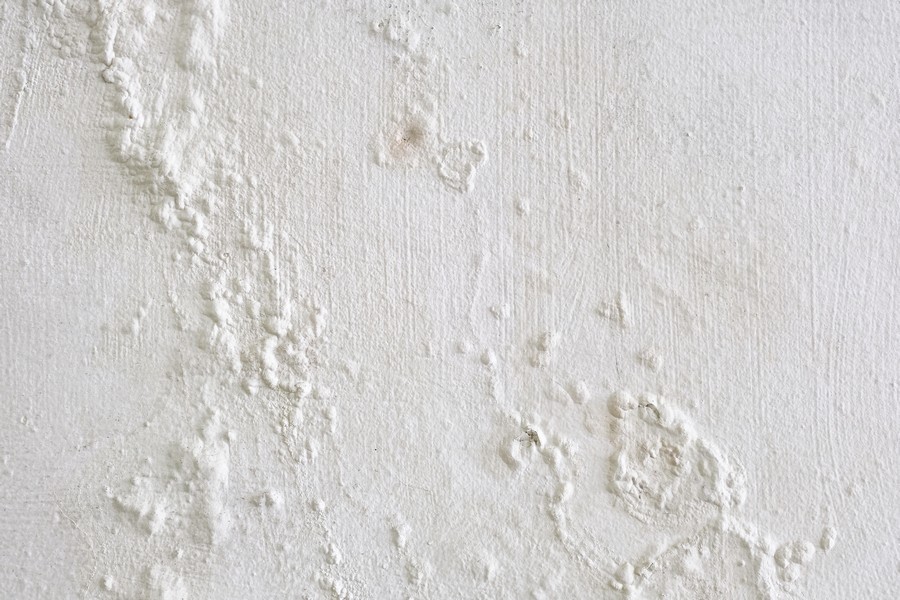Contact Brighton Damp Treatments Now to Speak With an Expert.

Penetrating damp, sometimes referred to as water ingress or lateral damp, is a common problem in older buildings but can affect properties of any age.
Penetrating damp is caused by water entering a home through an external wall, due to either a structural fault or the deterioration of brick or stone walls, making them porous. Mould growth can be accelerated by penetrating dampness, leading to black mould being common in areas with high humidity.
The most typical distinction between rising and penetrating damp is their height. Rising damp occurs up to one metre from the ground, whereas penetrating damp can appear in any area.
Identifying penetrating damp can be tricky if you don’t know what to look for, as many of its symptoms are similar to those of other forms of dampness. What should one look out for? Signs, no matter how small or large, include:
Damage to brickwork on external walls, such as spalling and cracks in the structure, can permit moisture to enter the premises.
When surveying certain parts of the building, watermarks on walls, windows or ceilings can be a sign of penetration moisture issues. Usually there will be significant readings in these areas.

If rain persists, water can enter your property and cause damp patches to form on walls indoors. In cooler areas of the building, condensation may also appear due to this. If the issue has become serious enough, you might even see droplets of water. Unlike rising damp, these will not come from the ground.
If your residence is experiencing penetrating damp, the quicker you address the matter, the less harm it will cause. Reach out to our experts in damp proofing today by ringing 01273 920588 or submitting an online form to book a survey.
Internal walls can be insulated to provide insulation and soundproofing. This can help reduce energy costs while improving comfort levels.
Penetrating damp can be detected inside houses too, not just on the exterior. Common signs of this form of damp include damaged plasterwork, rotted wood and mould growth.
The deterioration of paints and plaster, blistering, and the emergence of stains and salts on the surface of walls can all be caused by penetrating dampness.
Damp masonry can wreak havoc on wooden fixtures that are directly attached to it. Water can seep through bricks and saturate wooden structures, causing them to rust and disintegrate.
Mould development on walls is often linked to condensation, but it can also indicate penetrating wetness. The moist wall surface provides a favourable environment for mould growth.
Contact Brighton Damp Treatments Now to Speak With an Expert.
Mould often results from condensation, though it may also symbolise penetrating moisture. The damp wall surface furnishes an ideal habitat for mould proliferation.
The most frequent indication of penetrating damp on the building’s outer walls is damage to the brickwork. Frost damage is usually the cause of this; moisture freezes and expands in cold temperatures. If it finds its way into the brick, then when it thaws out again, it will expand, resulting in fractures and spalling in the walls.
When moisture accumulates on walls, moss and algae quickly form. These organisms thrive in damp conditions and can spread rapidly if not treated promptly. This eventually leads to erosion of the brickwork, which is undesirable for any homeowner.
If you have any queries, please do not hesitate to get in touch with us. We are available 7 days a week, 24 hours a day.
Call Our Brighton Damp Experts team now for a free quote, consultation and advice.
Solid-wall constructions are more at risk of suffering from penetrating damp than those with cavity walls. Cavity walls have an advantage in that they create a gap between the internal and external walls, which stops moisture from rapidly entering inside.
Property owners should remain cognizant that having cavity walls does not render immunity from penetrating damp issues. Cavity wall insulation can cause difficulties as the walls may become blocked, allowing water to infiltrate through the inner wall despite usually being restricted by an air gap.
Moisture can penetrate the interior walls of a building if its insulation is moist. If there are issues with the external wall’s cavity, it will cause moisture to pass through into the internal one, potentially damaging its insulation.
We hope this tutorial has provided a better understanding of identifying signs of penetrating damp. If you observe any moisture infiltration, it is best to have a specialist in damp take a look at your house to ensure the issue is accurately diagnosed.
Our expert will conduct a thorough survey of the property, examining all areas for signs of damp and other timber-related issues. Once completed, you’ll receive a detailed report outlining what was uncovered during the inspection, including any potential sources of the problem; as well as measures to prevent reoccurrence. To arrange a survey simply contact our team online or call 01273 920588.

Brighton Damp Treatments is the go-to for professional penetrating damp treatment. Our top-notch surveyors, and other specialists, will analyse, diagnose and treat your problem using state-of-the art technology and methods. We have 10+ years’ experience dealing with rot, woodworm and damp in properties – so get in touch on 01273 920588 or click the button below to arrange a survey now!
Penetrating damp is a very serious issue. It enables ideal conditions for the growth of Serpula lacrymans, as well as obvious signs. This hazardous fungus is known as dry rot and can cause destruction to your home’s timber framework, posing a threat.
Humidity has been identified as a major contributor to respiratory issues in the general populace, especially among elderly people, asthmatics and children. Although dampness alone is not necessarily detrimental, it can exacerbate symptoms of those who already have health issues.
Your home may be prone to penetrating damp due to various factors. Leaking or punctured pipes, broken roofs, and blocked gutters are all typical causes of damp issues. These flaws let moisture in through the walls of your property, leading to the formation of dampness.
As time goes on, the damp damage and paint lifting on your interior walls becomes increasingly evident. In winter months, this is aggravated when water in the walls freezes and expands, leading to flaking of the raised paintwork.
Rain can infiltrate buildings through leaky roofs, clogged gutters, overflows and other water entry points, resulting in penetrating damp. This can cause considerable damage to walls and beams if the moisture penetrates into the structure of the building. Big stains on ceilings, floors, walls and paintwork are a tell-tale sign of this problem after heavy rains.
The parapets, roofs and chimneys are especially vulnerable to the effects of heavy rain due to their hard-to-reach nature. Broken water ridges, lead flashings, hips or water fillets can let moisture in causing roof junctions to be particularly troublesome. Structural issues such as faulty roofs, gutters or wall cracks often result in penetrating damp which can cause damage both inside and outside a building’s walls.
Identifying and rectifying the source of moisture or water penetration is pivotal in treating penetrating dampness. Usually, property-related matters are to blame for this phenomenon. In residential buildings, there are usually four potential points of water entry that can have an effect on a dwelling:

Cracks in the render are noticeable, and they can vary from minor fissures to major splits. Minor cracks aren’t typically a cause for concern; however, larger ones should be inspected and repaired by an experienced professional as soon as possible.
Cracks in the render are visible, ranging from slight fissures to deep splits. Minor fractures don’t usually require worry; however, bigger ones ought to be checked and fixed by a skilled expert without delay.
To ensure the brickwork remains unaffected by moisture, all of these areas must be maintained in optimal condition, with any defects identified and remedied promptly.
It is not possible to set a fixed cost for damp treatment as it depends on various factors such as the size of the house and the magnitude of damage. After undertaking an inspection into your property, we will provide you with an estimation for treating penetrating dampness.
We uphold top-notch standards for damp proofing, re-plastering, wood preservation, and damp inspections.
We offer customised, reliable and professional damp proofing treatment and repair services to homeowners, local authorities, small businesses and large commercial properties.
If you’re having damp problems in Brighton and its environs, give our damp specialists a ring on 01273 920588 to arrange an inspection or treatment.
Our surveyors, following our instructions, will thoroughly examine and provide a report with pricing and treatment suggestions.
Our damp proofing team consists of experienced professionals who can tackle a variety of damp issues. These include penetrating damp, dry rot and woodworm, wet rot, wood rot, basement waterproofing as well as interior dampness and condensation control in both commercial and residential properties.


Max and his team have been at our property all week and I really can’t thank them enough for the fantastic job they’ve done on plastering both our walls and ceilings. They have literally transformed the appearance of our house! Not only has Ma…
From start to finish Max has been incredable. His knowledge lin damp proofing is second to none and his team where very clean and polite. The plastered finish was like glass so happy we choose Max Plastering for job.
Lovely bunch of lads left a very neat and clean job. Problem was solved.
Perfect Finnish and all left clean and tidy and no mess. Used Max previously and would not hesitate to ask him carry out more work.
Max, Harvey and Stuart arrived promptly as arranged. Done a great job on our outside rear wall. Work completed to a high standard, removal of all old material and cleaned up after themselves. I am so pleased with the standard of their work they ar…
They turned up on time and carried out the works in a very professional manor leaving the front of the house clean and tidy. Very impressed would definitely recommend.
I have to say that on every level Max (with Stuart and Harvey) did an extremely professional job! They explained what they were going to do, they were polite and courteous and respected that they were coming into our home. The plastering is of the…
I called max and he managed to come around the same day to do a survey. The next day I received an extremely detailed survey compared to any other damp proofer which made me feel very at ease that he was going to do the right job. Max and team tur…
Contact Brighton Damp Treatments Now to Speak With an Expert.